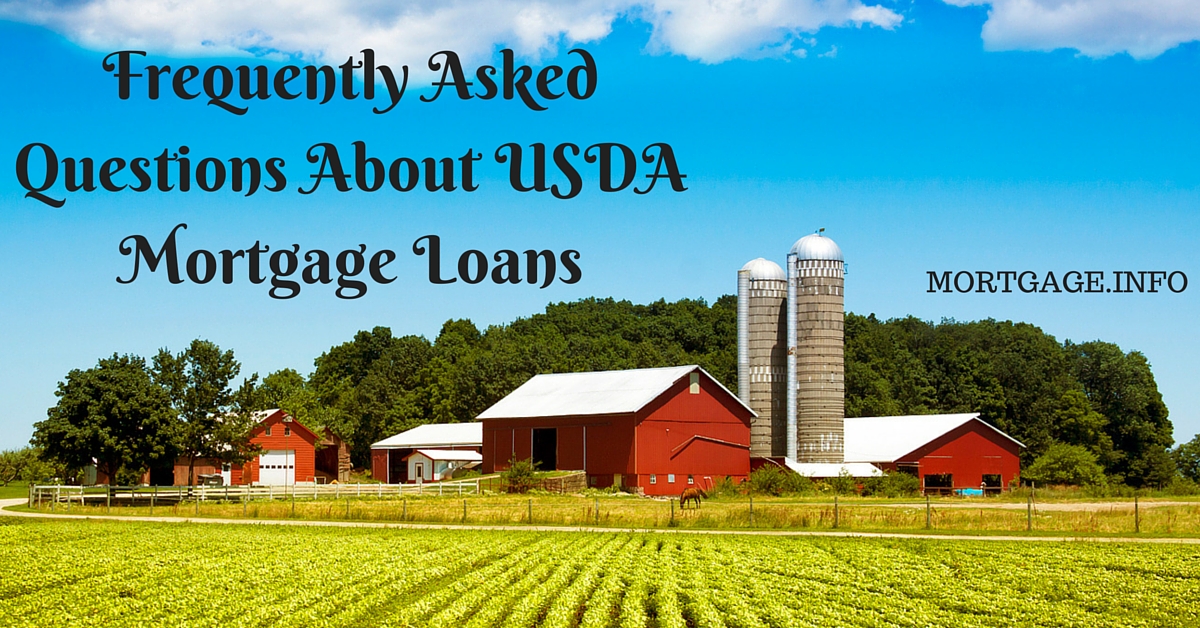 Are you aware of how USDA financing can help you? Do you even know how the program works? Following are the most common answers to questions about USDA loans to help you get started.
Are you aware of how USDA financing can help you? Do you even know how the program works? Following are the most common answers to questions about USDA loans to help you get started.
What is a USDA Loan?
The USDA loan is funding provided by a lender but insured by the government to purchase a home in a rural area. They are one of the least expensive programs on the market as they allow for no down payment and have flexible guidelines that allow for fewer interest rate adjustments. This loan program does require you to pay an upfront funding fee to help fund the USDA’s reserves to guarantee loans as well as annual mortgage insurance, which is charged on a monthly basis to make it more affordable. The loan is guaranteed by the USDA, which means the lender receives a portion of the money back from the USDA if you default on your mortgage in the future.
How much is the funding fee?
The funding fee on the USDA loans is the fee you pay upfront at the closing. If you do not have the money to pay this fee, you can have it rolled into your loan amount. As of October, 2015, the fee increased to 2.75 percent of the loan amount – previously it was 2 percent.
How much is annual mortgage insurance?
The annual mortgage insurance charged on the USDA loan is rather affordable compared to other programs. Right now it remains at 0.5 percent of the loan amount and is charged on an annual basis. For example, on a $100,000 loan, your annual mortgage insurance would be $500, payable in 12-month increments of $41.67.
What is the minimum credit score for the program?
Just like any program, the USDA program has a minimum credit score. Right now that score is 580; however, if your score is between 580 and 619, you will have to undergo a stricter evaluation of your loan file as consumers with those scores are considered riskier. If your credit score reaches 620 or above; however, you will have an easier time qualifying for the loan.
What are the income requirements?
The USDA loan works a little different than any other loan type. For this program, the less money you make, the more eligible you become for the program. This is because the government started this program in order to stimulate less fortunate areas of the country and to provide safe and sanitary housing for those that would otherwise be unable to afford it. Because of this, you must fall within 115% or less of your county’s median income. This information can be found on the USDA website so you can see if your household income qualifies for your area.
Where does the property need to be located?
The property you purchase or refinance must be located within the rural boundaries that the USDA sets forth. These boundaries are created based on the latest census and change periodically. Typically, a large portion of the United States is considered rural in the eyes of the USDA, which means many people are eligible for this program based on the location of their property alone. In general, the USDA considers any area that is open country or has a population less than 10,000 to be rural.
What types of property are allowed?
Only single family residences are eligible for this type of financing. This means a single family home, townhome, condo, or PUD. The home cannot be mobile. It also must be modest for the area with its value not exceeding the maximum loan amount for your area, which you can find on the USDA website. In addition, the home cannot have a pool or be used for any type of income production.
What are the debt ratio requirements?
The USDA is flexible with its guidelines, but it does require debt ratios to be within the 29/41 limits. This means that your housing payments (mortgage, taxes, and insurance) are no more than 29 percent of your gross monthly income. It also means that your total debts, such as student loans, credit cards, car payments, and mortgage, do not exceed 41 percent of your gross monthly income.
Does the USDA grant exceptions to the debt ratio?
There are exceptions allowed for USDA loans and debt ratios, but you must be able to prove other financial responsible factors, such as a steady job with stable income or a high credit score. The lender needs to be able to offset the higher risk you pose by taking on a higher than average debt ratio.
Are only first-time homebuyers allowed?
No, the USDA provides their financing to anyone that qualifies based on their income, credit, and property location.
Do you need a down payment?
No. The USDA allows for 100 percent financing, which means you do not need to put anything down if you are not able or willing to do so.
Do you have to pay closing costs?
Every loan has closing costs, but the USDA program allows you to roll them into your loan amount if you cannot pay them at the closing. This means that you can bring no money to the closing and still get the loan. In most cases, you can finance up to 102 percent of the value of the property. If the lender does not allow you to go over 100 percent, at the very least, you can finance as much of the closing costs as you can fit in between the contracted price for the home and the value of the home.
